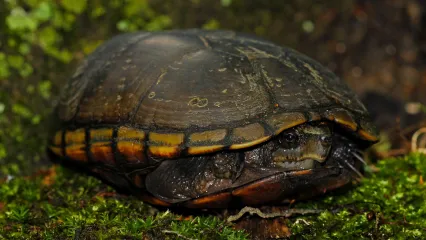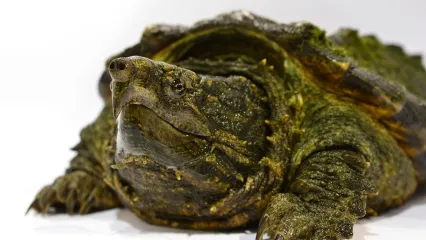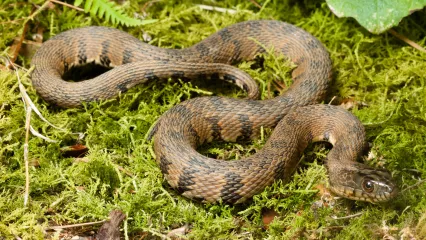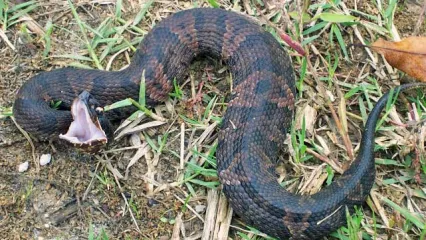
Description
Mississippi mud turtles are small, drab-colored aquatic turtles with no obvious discerning features. The carapace is smooth, dome-shaped, dark brown, and has no markings. Algae often grows on the shell giving portions of the shell a greenish appearance. The carapacial scutes are large and the marginal scutes are narrow forming nearly a straight line around the lateral edges of the shell. The plastron is deep yellow and, although the plastron has both anterior and posterior hinges, it is not completely closable as in box turtles. The anterior hinge is much more obvious than the posterior hinge. The plastron is relatively large and no skin is apparent between pastron scutes. The hind feet are webbed, but the front feet are not. A yellow line extends back from the top of the eye along the neck, and a lighter stripe extends at a 45 degree angle down from the back of the jaw. The only turtle this can be confused with is the stinkpot. Stinkpots have skin between scutes on the plastron and have two yellow stripes that start at the tip of the snout and extend back across the head and along the side of the neck. The top stripe extends above the eye and the bottom stripe extends below the eye.
These turtles are common where they occur, often reaching high densities. Because of their life history (long time to reach sexual maturity and repeated reproduction over a long lifetime with high nest and juvenile mortality), harvest of adult females can have highly detrimental effects on populations.
Size
Large adult Mississippi mud turtles can reach a carapace length of just over eight inches. Males are slightly larger than females as adults. Hatchlings are less than an inch in carapace length.
Habitat
Mississippi mud turtles occur across eastern Oklahoma. Their North American distribution extends west to east from central Texas to New York and from north to south from New York to the tip of the Florida peninsular.
Life Cycle
Mississippi mud turtles are common turtles in roadside ditches, small ponds, edges of large ponds and lakes, and in slow-moving areas of streams. Mississippi mud turtles forage on the bottom of their aquatic habitats, feeding on a combination of animal and plant material. The reproductive season extends from April through July during which individual females can deposit three or more clutches of one to six eggs. Eggs are laid almost anywhere – sometimes in nests, sometimes in burrows of other animals, and sometimes on the ground. Incubation of eggs takes three to three and one-half months. Females reach sexual maturity at an age of six to eight years.
How To Observe
Although these turtles rarely bask, they move about frequently on land and are often seen crossing roads during spring, summer, and fall, especially following rainstorms. They can also be captured with hand nets in roadside ditches and small ponds.
(This profile was created by Dr. Laurie Vitt as part of a partnership between the Wildlife Department and the Sam Noble Oklahoma Museum of Natural History. It was funded as part of a larger State Wildlife Grant to survey and inventory amphibians and reptiles of the Wildlife Management Areas of Oklahoma: T-35-P-1.


